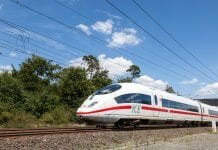
Government Europa discusses the role of rail radar positioning in securing the safety and reliability of rail for passengers in Europe.
As Europe’s trains are increasing populated with more and more citizens, the demand on Europe’s rails is growing, resulting in demand for more carriages, more services, and more reliability. As a result, rail radar positioning provides an accurate and reliable localisation system which is able to estimate train position and speed using on-board measurements.
On board, this service is being used to inform train announcements as well as in detecting track faults through a monitoring system which can identify the precise location of faults on the rail track. Government Europa discusses the role of rail radar positioning in securing the safety of rail for passengers in Europe.
Train positioning is currently monitored through various methods, including:
- Placement of tags along the railway;
- Rail radar positioning; and
- GPS satellites which determine the position of a unit on the ground, in the air, or sea.
However, these have a range of disadvantages, which range from installation and repair costs, and lack of accuracy (affected by the weather, to loss of train parameters when passing through tunnels). As a result, trains revert to onboard monitoring through the dead-reckoning technique. The back-up system estimates both the position and speed of the train without external assistance, by the sensors pre-installed into the trains engine.
Non-augmented GNSS is a tool used by track managers and operators and have assisted in improving asset use and customer service through train tracking. Meanwhile, precise GNSS has been utilised for the purpose of track surveys, location of infrastructure and managing train movements. In the future, an accurate and reliable global navigation satellite system could facilitate new and innovative future technologies, including:
- Driverless trains;
- Advanced forms of train protection and control; and
- Improved maintenance and track monitoring.
In Australia, Augmented Train Management Systems (ATMS) are being developed and are based upon the technology of GPS. ATMS is capable of providing train position within a few metres. They are expected to increase: rail capacity; reliability through less delays; safety, through the means of authority and speed limit enforcement; and protection for trackside workers, amongst other benefits.


















